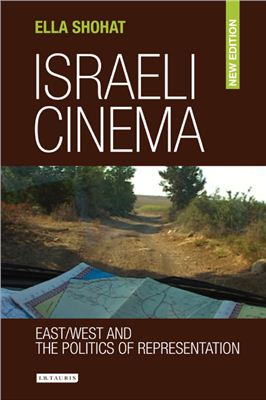Publisher: I. B. Tauris, London & New York, 2010. 416 pages.
Language: English.
This is a new edition of Israeli Cinema with a substantial new postscript that reflects on the book's initial reception and points to exciting new trends in the cinematic representation of Israel and Palestine.
Ella Shohat explores the cinema as a productive site of national culture, dating back to the early Zionist films about tu-of-the-century Palestine. She offers a deconstructionist reading of Zionism, viewing the cinema as itself participating in the "invention" of the nation. Unthinking the Eurocentric imaginary of "East versus West," Shohat highlights the paradoxes of an anomalous national/colonial project through a number of salient issues, including the Sabra figure as a negation of the "Diaspora Jew," the iconography of the land of Israel as a denial of Palestine, and the narrative role of "the good Arab." The new postscript examines the emergence of a richly multiperspectival cinematic space that transcends earlier dichotomies through a palimpsestic and cross-border approach to Israel / Palestine.
This is a new edition of Israeli Cinema with a substantial new postscript that reflects on the book's initial reception and points to exciting new trends in the cinematic representation of Israel and Palestine.
Ella Shohat explores the cinema as a productive site of national culture, dating back to the early Zionist films about tu-of-the-century Palestine. She offers a deconstructionist reading of Zionism, viewing the cinema as itself participating in the "invention" of the nation. Unthinking the Eurocentric imaginary of "East versus West," Shohat highlights the paradoxes of an anomalous national/colonial project through a number of salient issues, including the Sabra figure as a negation of the "Diaspora Jew," the iconography of the land of Israel as a denial of Palestine, and the narrative role of "the good Arab." The new postscript examines the emergence of a richly multiperspectival cinematic space that transcends earlier dichotomies through a palimpsestic and cross-border approach to Israel / Palestine.

